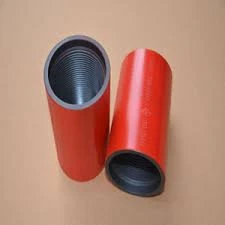- Afrikaans
- Albanian
- Amharic
- Arabic
- Armenian
- Azerbaijani
- Basque
- Belarusian
- Bengali
- Bosnian
- Bulgarian
- Catalan
- Cebuano
- Corsican
- Croatian
- Czech
- Danish
- Dutch
- English
- Esperanto
- Estonian
- Finnish
- French
- Frisian
- Galician
- Georgian
- German
- Greek
- Gujarati
- Haitian Creole
- hausa
- hawaiian
- Hebrew
- Hindi
- Miao
- Hungarian
- Icelandic
- igbo
- Indonesian
- irish
- Italian
- Japanese
- Javanese
- Kannada
- kazakh
- Khmer
- Rwandese
- Korean
- Kurdish
- Kyrgyz
- Lao
- Latin
- Latvian
- Lithuanian
- Luxembourgish
- Macedonian
- Malgashi
- Malay
- Malayalam
- Maltese
- Maori
- Marathi
- Mongolian
- Myanmar
- Nepali
- Norwegian
- Norwegian
- Occitan
- Pashto
- Persian
- Polish
- Portuguese
- Punjabi
- Romanian
- Russian
- Samoan
- Scottish Gaelic
- Serbian
- Sesotho
- Shona
- Sindhi
- Sinhala
- Slovak
- Slovenian
- Somali
- Spanish
- Sundanese
- Swahili
- Swedish
- Tagalog
- Tajik
- Tamil
- Tatar
- Telugu
- Thai
- Turkish
- Turkmen
- Ukrainian
- Urdu
- Uighur
- Uzbek
- Vietnamese
- Welsh
- Bantu
- Yiddish
- Yoruba
- Zulu
Optimizing Nipple Tubing Seating for Enhanced Performance and Reliability in Systems
Understanding Seating, Nipple, and Tubing in Oil and Gas Industry
In the oil and gas industry, the efficiency and safety of extraction processes largely depend on the effective functionality of various components. Among these critical components are the seating, nipples, and tubing. Understanding these elements is essential for professionals in the field to ensure optimal performance and minimize risks associated with drilling operations.
Seating in Tubing Systems
Seating refers to the way in which tubing or casing is positioned and secured within the wellbore. The seating process is crucial, as it establishes a solid foundation from which the production can occur. Proper seating is vital to ensure that fluids can pass through the systems without leakage or loss of pressure. It involves selecting the right type of seals and packers that can withstand the extreme conditions found in the subsurface environment.
The seating technique can greatly influence the lifespan of the tubing. Any misalignment or improper installation can lead to severe consequences, including blowouts, leaks, or even catastrophic failures. Therefore, engineers must be meticulous in their approach to seating, ensuring that each connection adheres to strict industry standards and regulations.
Nipples A Critical Connection
Nipples play a significant role in tubing systems, acting as connection points for various components. These short lengths of pipe are essential for creating sealed joints between sections of tubing and for attaching different devices that facilitate the extraction process, such as pumps, valves, and instrumentation.
There are two main types of nipples threaded and welded. Threaded nipples are easier to connect and disconnect, making them ideal for operations requiring frequent changes in equipment or configuration. On the other hand, welded nipples provide a stronger and permanent connection, which may be necessary in high-pressure situations.
seating nipple tubing

Choosing the right type of nipple depends on several factors, including the well's pressure, temperature, and the chemical properties of the fluids being extracted. Engineers and technicians must carefully evaluate these variables to ensure that the nipples selected can handle the operational demands without compromising the integrity of the overall system.
Tubing The Lifeline of Extraction
Tubing is an essential component in the oil and gas production process as it transports hydrocarbons from the reservoir to the surface. It is typically made from high-strength steel to withstand the corrosive and high-pressure environment of the wellbore. The selection of tubing is guided by the properties of the reservoir and the expected conditions during production.
There are different types of tubing used in the industry, including production tubing, flowline tubing, and injection tubing. Each type serves a specific purpose in the extraction process. Production tubing is primarily used for transporting oil and gas, flowline tubing connects the production well to processing facilities, while injection tubing is used for water or gas injection to maintain pressure within the reservoir.
Maintenance and Inspection
Maintaining the integrity of seating, nipples, and tubing is essential to ensure operational efficiency. Regular inspection and maintenance can help identify potential issues before they escalate into serious problems. Techniques such as non-destructive testing, pressure testing, and visual inspections are commonly used to monitor the condition of these components.
In conclusion, seating, nipples, and tubing are fundamental components of the oil and gas industry. Their proper selection, installation, and maintenance are crucial for the efficient and safe extraction of resources. As technology advances and the industry faces new challenges, continuing education and adherence to best practices will remain paramount for professionals working with these essential systems. By understanding and optimizing each element, the industry can move towards safer and more efficient production processes, ultimately benefiting the global energy landscape.
-
Tubing Pup Joints: Essential Components for Oil and Gas OperationsNewsJul.10,2025
-
Pup Joints: Essential Components for Reliable Drilling OperationsNewsJul.10,2025
-
Pipe Couplings: Connecting Your World EfficientlyNewsJul.10,2025
-
Mastering Oilfield Operations with Quality Tubing and CasingNewsJul.10,2025
-
High-Quality Casing Couplings for Every NeedNewsJul.10,2025
-
Boost Your Drilling Efficiency with Premium Crossover Tools & Seating NipplesNewsJul.10,2025







